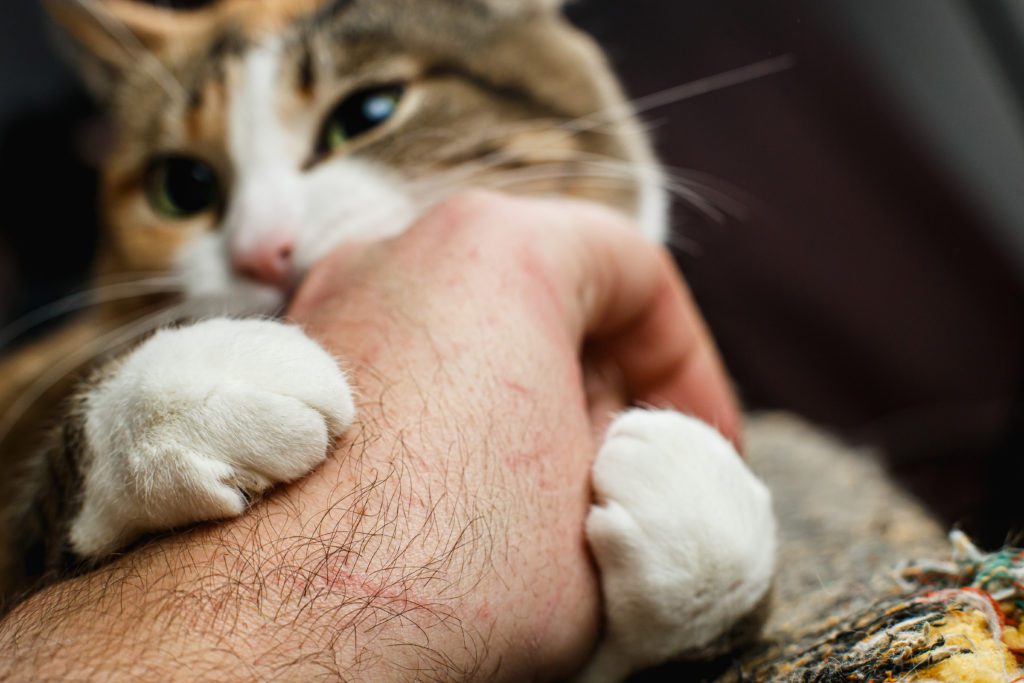Understanding the Effects of Cat Scratch Disease in Amesbury, MA
Cat Scratch Fever is a disease that can be passed from cats to humans. Although most cats do not exhibit any symptoms of cat scratch fever at all, many people will experience swollen lymph nodes and flu like symptoms.
In most cases the effects of Cat Scratch Disease are fairly mild in people, and most cats are not affected by this disease at all. However, some people can be at risk of developing complications of Cat Scratch Fever. These people include children and those with problems affecting their immune system.
In this article we will be explaining everything that cat lovers should know about Cat Scratch Disease. This includes how the disease is treated, transmitted, and what the symptoms of the disease are. In addition to this, we will also be answering some commonly asked questions this disease, so let’s get into it.
What Is Cat Scratch Disease?
Cat Scratch Disease is an illness that is passed from cats to humans through deep scratch and bite wounds, and cats become infected with this bacteria through infected fleas. Also called Cat Scratch Fever or Bartonella henselae, this disease can cause physical and neurological symptoms in humans.
How Can You Catch Cat Scratch Disease?
Cats become infected with the bacteria causing this disease from infected fleas. Once the cat has been infected, they can then pass the disease onto humans. Cats can pass the disease to humans from deep scratch wounds and bites that draw blood.
In addition to this, people can occasionally get Cat Scratch Disease from the infected fleas themselves. Cats can also pass it on to humans by licking their eyes or open wounds. Luckily, people cannot pass the disease among one another.

What Are The Symptoms Of Cat Scratch Disease?
The first symptom of Cat Scratch Fever that people usually notice is a red bump near where the infected cat scratched or bit them. This sore can appear anywhere between one week to two months after the scratch or bite. Some other symptoms that people with this disease can experience include fever, rash, headaches, fatigue, swollen lymph nodes, and a reduced appetite.
Most of the time these symptoms are fairly mild in people, and the disease is usually not life threatening. The only individuals that are at risk for experiencing severe complications as a result of this disease are young children and those with autoimmune diseases.
When it comes to cats, most show no signs of having this disease at all, and many of them are not really affected much by the disease. However, young kittens and some immunosuppressed cats may also experience some serious complications to this illness.
How Does Cat Scratch Fever Affect The Brain?
Most of the time people will only experience fever, headache, and fatigue, and these are the only symptoms affecting the brain in most individuals. However, in some very extreme and rare cases there may be more effects on the brain besides this. The same is true for cats with this infection. Most of the time cats will show no symptoms, but in extreme complications the brain may be affected in cats.
Can Symptoms from This Disease Come And Go?
Most of the time cat scratch disease causes flu like symptoms in healthy people. Although these symptoms can come and go, most of the time people experience symptoms that are fairly common.
How Is Cat Scratch Disease Diagnosed?
Usually cat scratch disease in humans is diagnosed through a physical exam by a doctor. This is because the symptoms and causes of this disease are usually pretty unique. A doctor may also occasionally call for a blood test as well.
When it comes to cats only those experiencing complications are likely to get diagnosed. In these cases a vet will usually diagnose it through a physical exam and blood test.

How Is This Disease Treated?
Depending on your situation, your doctor may prescribe antibiotics to help clear up the bacterial infection. However, most otherwise healthy adults will be fine to let the infection clear up on its own.
How Can You Prevent Cat Scratch Fever?
Luckily, Cat Scratch Fever is a disease that can be prevented. Usually washing out a cat bite or scratch thoroughly with soap and water is enough to someone from catching it. In addition to this, you should never allow a cat to lick at an open wound or your eyes.
Is This Disease Fatal?
Most of the time, no, cat scratch disease is not fatal in either cats or people. It is extremely rare for people and cats to experience complications from this disease, let alone experience problems that are life threatening as a result of this disease.
What Happens If Cat Scratch Fever Goes Untreated?
In most people cat scratch disease will just clear up on its own after a little bit of time. However, young children and immunosuppressed people may experience damaging complications if it is left untreated. In very rare and extreme cases these complications could potentially become life threatening.
How Long Does This Disease Last?
Once symptoms have started most people experience fairly mild symptoms of Cat Scratch Disease for around one month or less. However, some people may experience symptoms for longer. Usually those who experience a long period of illness are those that are at risk of experiencing complications. This is most commonly people with autoimmune disorders and young children.
Can You Have Cat Scratch Fever For Years?
No, you cannot have this disease for years. Most of the time symptoms last for up to six weeks at its longest. Although those who get complications from Cat Scratch Fever can be affected for a fairly long time, it would be extremely unusual for someone to be affected by them for years on end.
If you have any questions regarding your pets health, you should always call (978) 388-3074 or book an appointment online to talk with your veterinarian at Merrimac Valley Animal Hospital to discuss it.
Recent Posts
About Us
Merrimac Valley Animal Hospital had humble beginnings in 1968. Dr. Walter Brown opened the animal hospital in a garage next to his home near the current hospital and operated out of this small space until the current building was built in 1969.
